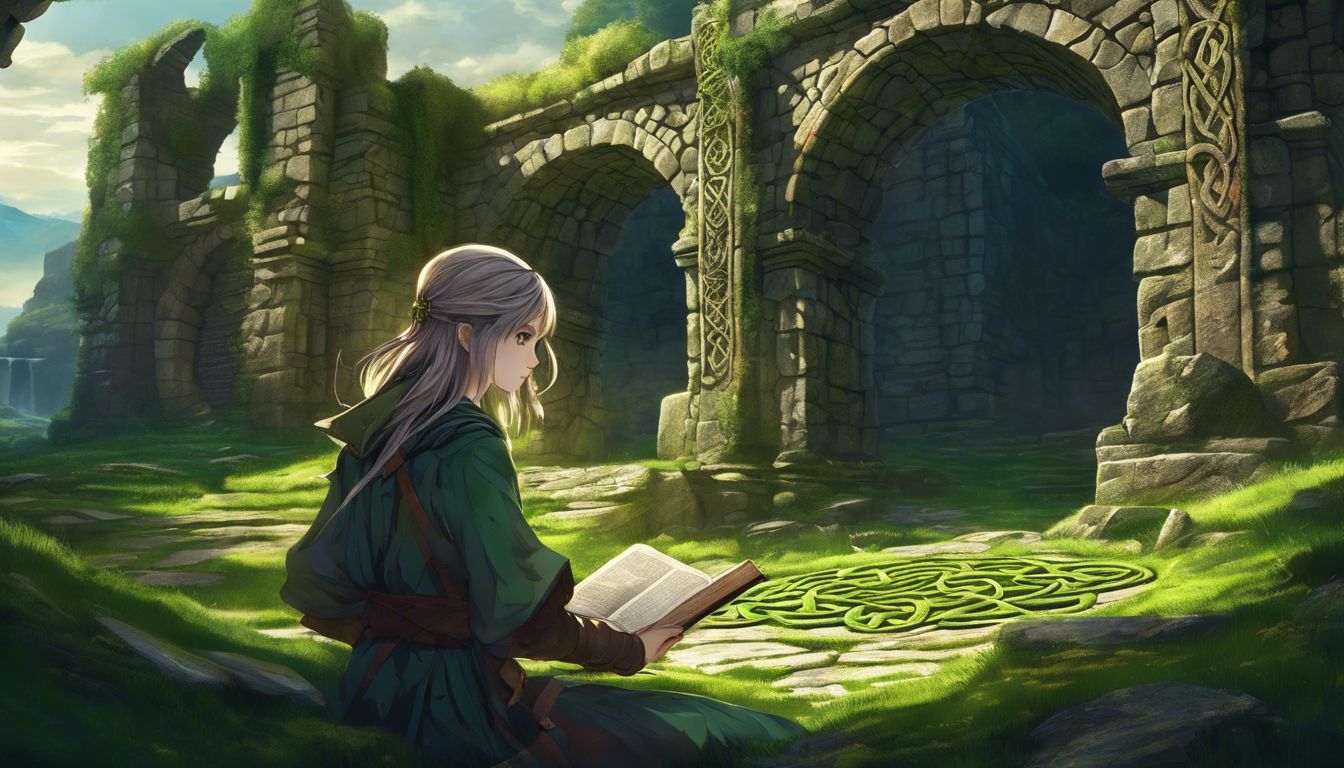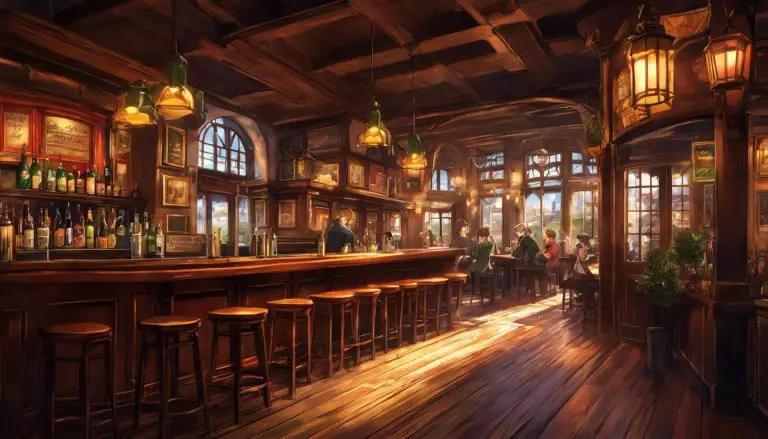What Does the Celtic Knot Mean? Understanding the Symbolism and History
Have you ever caught sight of a captivating Celtic knot and found yourself intrigued by its profound symbolism? I know that feeling, standing there transfixed by the endless pathways and elaborate patterns.
When I took some time to explore their storied past, it was like uncovering a treasure trove—it turns out these knots are more than mere art; they’re rich with centuries of meaning and storytelling.
So come along on this journey as we delve into the enigmatic beauty of these ancient symbols, discovering stories interwoven within each twist and turn. Let’s embark on this exploration together!
Key Takeaways
- Celtic knots have a long history, starting around 450 AD in the late Roman Empire.
- These symbols can mean different things: eternity, love, strength, protection, and more.
- Christian influence mixed with ancient Celtic designs to create new meanings.
- Many types of Celtic knots exist like the Trinity knot and the Dara knot. Each has its own meaning.
- People today use Celtic knots in jewelry, tattoos, and art because they are beautiful and meaningful.
The History of Celtic Knots
Celtic knots have a rich history that dates back to ancient times, with early examples found in Celtic art and insular manuscripts. Over time, the influence of Christianity led to the evolution of intricate knotwork designs, which are still used in modern times.
Early examples
I love diving into the history of symbols, especially when they’ve traveled through time like Celtic knots. These ancient designs first appeared around 450 AD. They popped up in artwork from the late Roman Empire.
Early artisans crafted these intricate patterns with no start or end to show how everything in life is connected.
Artists engraved them on stones and metalwork across Ireland and Scotland. Picture this: interwoven lines coming together to tell stories of eternal life and unending love, way before modern times began! It’s like those artists were whispering their beliefs about the world into each twist and turn of the knotwork for us to find centuries later.
Christian Influence
Celtic knots have a rich history that intertwines with Christian influence. The interlaced patterns were adopted by the Celtic Christians, who incorporated them into their religious art and manuscripts.
The never-ending loops of the knots signified eternity and reflected the concept of God’s eternal love. These intricate designs became symbolic representations of Christian beliefs, such as the Holy Trinity, further blending Celtic heritage with Christian spirituality.
The fusion of Celtic knots with Christian symbolism brought forth unique artworks and illuminated manuscripts, embodying both cultures’ spiritual values. This integration expanded the significance of Celtic knots beyond their pagan roots, making them a timeless symbol embraced by travelers seeking to understand cultural connections and historical influences on symbolism.
Evolution of Celtic Knotwork
The evolution of Celtic knotwork showcases the intricate and continuous development of this ancient art form. As the early examples demonstrate, these knots originated from pagan beliefs and were intertwined with spiritual symbolism in Irish heritage.
Over time, the influence of Christianity led to a transformation in the interpretation and use of Gaelic knots as they became synonymous with themes such as eternal spiritual life and unity symbols.
Through history, Celtic knots have maintained their significance, becoming popular choices for expressing love, protection, and inner strength through their interlocking hearts and shield knot designs.
Use in more recent times
Celtic knots continue to be popular today, often seen in jewelry, art, and tattoos. Many people are drawn to the intricate designs and the rich symbolism behind each knot. Whether as a tattoo or a piece of jewelry, Celtic knots are used to symbolize love, eternity, protection, and strength.
Their timeless appeal transcends cultural boundaries and is embraced by people around the world. Embracing this ancient tradition allows individuals to connect with their roots while also carrying forward a symbol that has remained meaningful through centuries.
Moving on from the historical significance of Celtic knots, let’s delve into the various Symbolism and Meanings associated with these mesmerizing creations.
The Symbolism and Meanings of Celtic Knots
Celtic knots symbolize the eternal bond between man and the divine, inner strength, love and relationships, as well as protection and new beginnings. To learn more about the symbolism and meanings of these intricate designs, keep reading!
Connection between man and the divine
The Celtic knot represents the connection between humanity and the divine, symbolizing the interweaving of spiritual paths and individual journeys. The endless loops of the knot reflect eternity, embodying a sense of continuity between mortals and the sacred.
This timeless bond offers travelers a profound insight into ancient traditions and Irish symbolism, emphasizing the enduring link between human existence and higher planes of spirituality.
The symbolic meanings encoded within these intricate designs provide a glimpse into the depth of Celtic culture, unveiling a spiritual heritage steeped in love, protection, strength, and unbroken unity.
Inner strength
Celtic knots, such as the Shield or Dara knot, symbolize strength and resilience. These knots represent the ability to endure challenges and overcome adversity. Their interconnected patterns embody the concept of inner fortitude, making them a powerful symbol for travelers seeking inspiration and courage along their journey.
The symbolism of Celtic knots speaks directly to the human spirit’s capacity for endurance and perseverance. They are a reminder that we all possess an innate strength to navigate life’s obstacles, evoking a sense of empowerment in facing unknown adventures.
Love and relationships
The Celtic love knot is an intricate symbol representing eternal love and the unbreakable bond between two individuals. Its intertwining design expresses the idea of two souls intertwined for eternity, making it a perfect representation of a deep and everlasting connection in relationships.
This ancient symbol has been embraced by people around the world as a declaration of enduring affection and commitment. The Celtic love knot serves as a reminder that love knows no bounds and endures through time, making it a popular choice for couples seeking to express their unwavering devotion to one another.
The symbolism behind the Celtic love knot makes it an ideal choice for those looking to celebrate their relationship or commemorate significant milestones such as engagements, weddings, or anniversaries.
Protection and new beginnings
When it comes to Celtic knots, they are not only symbols of love and relationships but also bring a sense of protection and new beginnings. The Shield or Dara knots, for example, symbolize strength and protection, making them suitable choices for those seeking safeguarding in their journeys.
Furthermore, these timeless symbols can also signify new beginnings, making them meaningful for travelers embarking on fresh adventures.
In addition to symbolizing protection and new beginnings with the Shield or Dara knots, the unending loops in all types of Celtic knots reflect the idea of eternal renewal. This symbolism makes them a powerful choice for individuals seeking personal growth and positive changes in their lives.
Types of Celtic Knots
Explore the different types of Celtic knots, such as the Trinity knot, Dara knot, and Celtic Tree of Life. Each knot carries its own unique symbolism and meaning in Celtic culture.
Trinity knot
The trinity knot, also known as the triquetra, is a prominent Celtic symbol with three interconnected loops. It’s often associated with the Holy Trinity in Christianity, representing the Father, Son, and Holy Spirit.
This ancient symbol holds deep spiritual meaning and signifies concepts like unity, eternity, and the interconnection of earth, water, and sky. The trinity knot has been used to signify different things across history – from religious beliefs to a representation of eternal love or friendship.
Exploring its rich symbolism further reinforces that these knots are not just mere patterns; they possess profound meanings embedded within their design.
Dara knot
Moving on from the Trinity knot, another significant Celtic knot is the Dara knot. The Dara knot, also known as the Oak tree knot, represents strength and protection in Celtic culture.
It is derived from the root system of an oak tree, which symbolizes deep roots and resilience. The Dara knot’s meaning signifies inner strength, steadfastness, and the ability to weather any storm that life brings, making it a powerful symbol for travelers seeking stability and security during their journey.
The Dara knot holds great significance in Irish heritage and culture due to its association with the mighty oak tree—an emblem of both physical and spiritual power. This ancient symbol serves as a reminder that strength comes not only from physical capability but also from our inner resilience.
Celtic Tree of Life
The Celtic Tree of Life is a powerful symbol in Celtic culture, representing the connection between the physical and spiritual worlds. This ancient symbol features branches reaching into the sky and roots spreading into the earth, signifying harmony and balance.
The intertwining branches are also symbols of strength and renewal, while the deep-reaching roots represent resilience and grounding. The tree’s cycle of growth, death, and rebirth mirrors our own journey through life, making it a meaningful symbol for travelers seeking inner peace and spiritual connection.
Next up is \”Celtic Cross\” which holds significant historical importance in Celtic tradition.
Celtic Cross
Moving from the rich symbolism of the Celtic Tree of Life, let’s delve into the significance of the Celtic Cross. The Celtic Cross is a powerful symbol that combines a cross with a ring surrounding its intersection.
This ancient symbol holds deep meaning for many and has long been associated with ideas such as faith, eternity, and the enduring love of God. The circular shape at its center represents unity and totality, while the arms stretching out signify harmony and balance in all directions.
The intricate design reflects an unbroken connection between humanity and divinity while conveying protection and new beginnings. Pilgrims often sought solace in this symbol during their travels, finding strength through its representation of hope and unwavering devotion.
Celtic Love Knot
The Celtic Love Knot, also known as the Endless or Eternity Knot, embodies the unbreakable bond between two souls. This intricate knot has no beginning or end, symbolizing eternal love and unity.
The design of the endless loop signifies the interconnectedness of life and eternity, making it a powerful symbol for love and relationships. Its seamless pattern represents an everlasting connection, making it a popular choice for couples seeking to express their enduring affection through jewelry, tattoos, or other forms of art.
Celtic Love Knots have been embraced by people around the world as a timeless emblem of undying love and commitment. With its rich history deeply rooted in Celtic tradition, this enchanting knot serves as a beautiful reminder that true love knows no bounds and transcends time itself.
Shield Knot
The Shield Knot is a symbol of protection and strength in Celtic culture. It consists of four distinct points interconnected, creating a barrier to ward off evil spirits and protect against harm.
This knot was often used on shields for its powerful symbolism during battles and as an emblem of safeguarding one’s inner strength. The Shield Knot represents the resilience and resolve needed to overcome obstacles, making it a popular choice for those seeking protection or embarking on new beginnings.
Moving on from the Shield Knot, let’s delve into other types of Celtic knots, exploring their unique meanings and significance within Celtic symbolism.
FAQs about Celtic Knots
Curious about the origins of Celtic symbols and their relationship with Christianity? Want to know if Christians can wear Celtic knots? Read on to find out more.
Origins of Celtic symbols
Celtic symbols have a rich history, dating back to ancient Celtic culture and tradition. These symbols were prominent in Insular art, showcasing intricate knotwork designs that conveyed deeper meanings.
The origins of Celtic knots can be traced to the early examples found in artifacts from the 3rd and 4th centuries. Over time, Christian influence transformed these knots into representations of faith and spirituality.
Today, these authentic Celtic designs continue to resonate with people all over the world, reflecting the enduring appeal of Irish symbolism.
Christianity played an essential role in shaping the meaning behind these timeless symbols that travelers still encounter today as they explore different parts of the world.
Relationship between Celtic symbols and Christianity
Celtic symbols, including knots, have connections to early Christianity in Ireland and Scotland. These intricate designs were likely influenced by the Christian monks who combined their religious beliefs with Celtic artistry.
The Trinity knot, for example, is thought to symbolize the Holy Trinity of Father, Son, and Holy Spirit in Christianity. Moreover, the circular nature of many Celtic knots represents eternity and the concept of never-ending love – a notion that resonates deeply within Christian teachings on God’s enduring love for humanity.
The rich interweaving history between Celtic symbols and Christianity offers travelers a unique understanding of the cultural tapestry they encounter. This connection can be further explored through visiting historical sites where these symbolic influences are prominently featured.
Authenticity of different Celtic designs
Different Celtic designs have distinctive features and historical significance. Each design carries its own unique meaning and symbolism, reflecting the deep-rooted cultural heritage of the Celts.
Understanding the authenticity of these designs involves delving into their origins and uncovering the stories they hold. Exploring these intricate patterns can provide insight into the rich history and traditions of Celtic art, allowing travelers to appreciate the depth of meaning behind each authentic design.
The authenticity of various Celtic designs is reflected in their enduring presence throughout history, from ancient times to modern interpretations. These timeless symbols continue to captivate people around the world, drawing attention to their profound cultural relevance and artistic complexity.
Use of Celtic knots in modern times
In modern times, Celtic knots are widely used as decorative elements in jewelry, clothing, and home decor. These intricate designs have become popular choices for tattoos owing to their deep symbolism and aesthetic appeal.
Many people also incorporate Celtic knotwork into personalized gifts or wedding items to symbolize eternal love and unity. Additionally, craftsmen often feature these knots in their works, signifying the interconnectedness of life and eternity.
The use of Celtic knots has extended beyond traditional Irish and Scottish heritage; it is now a global symbol representing timeless connections and spiritual beliefs.
Can Christians wear Celtic knots?
Celtic knots are not inherently religious symbols, so Christians can wear them as jewelry or get them as tattoos without going against their faith. The significance of Celtic knots for Christians lies more in the meaning they choose to attribute to the symbol rather than any specific religious connotation.
Many people simply appreciate the artistic and historical value of these intricate designs without considering their origins or associations with ancient cultures. As a traveler, you may come across various interpretations and opinions about Celtic knots, but ultimately it’s important to consider what wearing such a symbol means to you personally.
### The History of Celtic Knots
Conclusion
In conclusion, understanding the symbolism and history of Celtic knots reveals their deep significance. Apply these practical insights to symbolize love, strength, and protection in your life.
Have you considered incorporating a Celtic knot into your personal symbols? The impact of embracing this ancient tradition can be profound. Explore further resources to delve deeper into the world of Celtic symbols.
Unlock the potential for meaningful connections through these timeless emblems.







